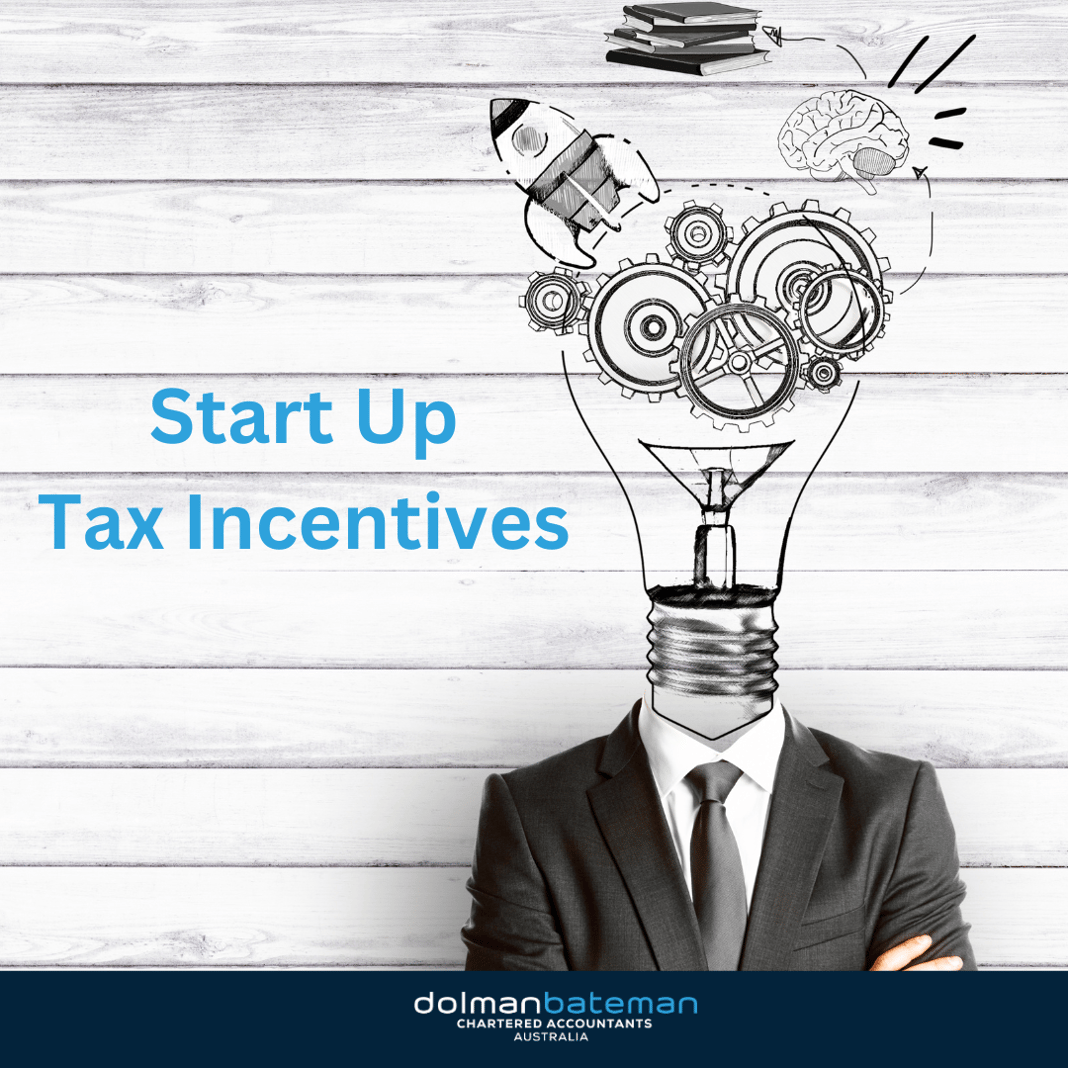The Research & Development (R&D) Tax Incentives is the Australian Government’s way of encouraging...
Tax Incentives for Early Stage Investors
 Australia's vibrant startup ecosystem has been gaining momentum, attracting innovative entrepreneurs and investors from around the world. To further boost this growth, the Australian government has introduced a range of tax incentives and concessions to encourage early-stage investment in startups and innovative companies.
Australia's vibrant startup ecosystem has been gaining momentum, attracting innovative entrepreneurs and investors from around the world. To further boost this growth, the Australian government has introduced a range of tax incentives and concessions to encourage early-stage investment in startups and innovative companies.
Early Stage Innovation Company (ESIC) Tax Incentives
One of the key initiatives designed to stimulate early stage investment in Australia is the Early Stage Innovation Company (ESIC) program. ESICs are companies that meet certain eligibility criteria, including being genuinely innovative, having less than $1 million in aggregated turnover, and not being listed on a stock exchange.
Investors who support ESICs can access the following tax incentives:
- 20% Non-Refundable Tax Offset: Eligible investors can claim a non-refundable tax offset equal to 20% of their investment in an ESIC, up to a maximum annual cap of $200,000.
- Capital Gains Tax (CGT) Exemption: Investors who hold their ESIC investment for at least 12 months and less than ten years can enjoy a CGT exemption when they sell their ESIC shares, provided the company meets certain conditions.
- Modified Dividend Rules: Investors may receive tax benefits on franked dividends from ESICs, with certain modifications to the rules to encourage investment.
Early Stage Venture Capital Limited Partnership (ESVCLP)
The Early Stage Venture Capital Limited Partnership (ESVCLP) program is another avenue for early stage investors to explore. ESVCLPs are venture capital funds that invest in eligible early stage companies.
Investors in ESVCLPs enjoy several tax benefits, including:
- Tax-Free Gains: Investors can receive tax-free gains on investments held for at least ten years.
- Income Tax Offsets: Investors in ESVCLPs may be eligible for an income tax offset equal to 10% of the value of their ESVCLP interests, up to a maximum of $200,000.
- Capital Gains Tax Discount: Investors can access a 10% CGT discount for capital gains derived from ESVCLP interests held for at least twelve months.
Crowd-Sourced Equity Funding (CSEF)
In 2017, Australia introduced a regulatory framework for Crowd-Sourced Equity Funding (CSEF). This enables startups and small businesses to raise capital by issuing shares to a large number of investors through licensed crowdfunding platforms. While not a tax incentive in the traditional sense, CSEF provides a streamlined fundraising option for startups and offers investors the opportunity to support early stage ventures.
Investors considering CSEF should be aware that they may receive shares in the company without any immediate tax benefits, but the potential for capital gains upon exit remains an attractive prospect.
Research and Development (R&D) Tax Incentives
In addition to ESIC and ESVCLP incentives, the Australian government provides R&D tax incentives to encourage innovation. These incentives offer tax offsets for eligible R&D activities conducted by companies, including startups, in Australia.
Investors should consider that investing in startups engaged in R&D activities could indirectly benefit from these incentives. Companies that receive R&D tax incentives may have greater resources to innovate and grow, potentially leading to more significant returns on investment.
To determine your eligibility for the tax incentive for early stage investors, you may seek professional advice from our seasoned Accountants, Their expertise is invaluable in tailoring guidance to your unique situation, enabling you to navigate these incentives adeptly and make well-informed investment choices.
This blog has been prepared for the purposes of general information and guidance only. It should not be used for specific advice or used for formulating decisions under any circumstances. If you would like specific advice about your own personal circumstances, please feel free to contact us on 02 9411 5422. We can help make sure the right method is used to give you the maximum possible tax deduction associated with any of these methods.


